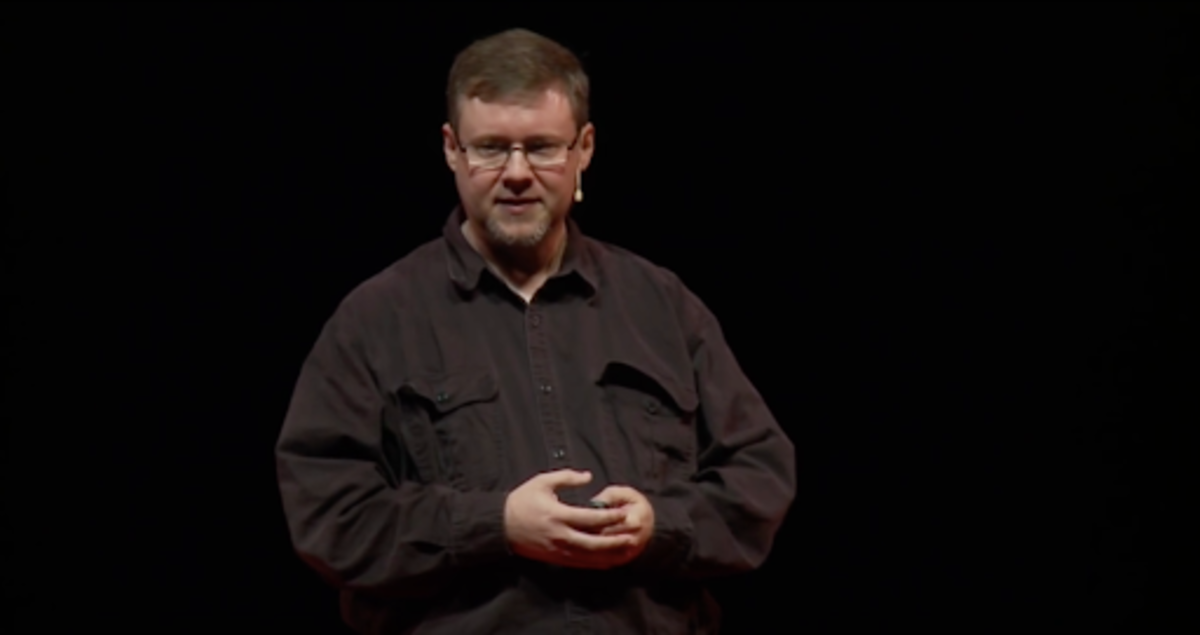This piece is included in Bitcoin Magazine’s “The Halving Edition.” Click here to purchase your copy.
As of 2021, the true identity of Satoshi Nakamoto is still shrouded in mystery, as is the two-year span from 2008 to 2010 when the creator of Bitcoin took on the role of the project’s primary developer and leader.
However, rather than being a stagnant phase of development, these years saw Nakamoto collaborating with dozens, if not hundreds, of Bitcoin enthusiasts who contributed in various capacities, from establishing websites to engaging in commerce and promoting his groundbreaking invention.
Naturally, some users rose to prominence as particularly significant contributors.
This meritocratic environment allowed those who helped shape fundamental aspects of the Bitcoin philosophy or expressed its value concepts in innovative ways to gain substantial recognition from their peers.
With this context, the following list seeks to identify the individuals who played pivotal roles in defining and molding Bitcoin during its formative years, highlighting their specific contributions and important works.
Martti Malmi (@Sirius)

Martti Malmi, Satoshi’s first assistant, showcased a dedication to Bitcoin at a time when few saw the potential in an internet currency lacking even a defined exchange rate.
As a university student in May 2009, Malmi significantly contributed to Bitcoin.org and the Bitcoin Wiki, enhancing the sites’ professionalism and comprehensiveness. (At the time, he humorously marked euros with “Bitcoin.org” whenever he came across them, writing on the bills.)
Malmi also infused early discussions around Bitcoin with an Austrian economic perspective, brushing aside critiques of gold as “outdated Keynesian arguments,” while asserting the precious metal’s unmatched stability over time compared to any paper currency.
While his entrepreneurial endeavors faced challenges, such as the struggles of his early exchange service, BitcoinExchange.com, in 2010, he effectively made his biggest impact by promoting Bitcoin, establishing a Facebook page with the rallying cry, “Say no to central banking — use Bitcoin, the revolutionary P2P currency!” and spearheading efforts to garner publicity for Bitcoin.
Theymos

As one of Bitcoin’s most insightful theorists, Theymos did not directly contribute any code to the Bitcoin project but served for years as a key moderator for its primary forums.
A diligent learner of the codebase, Theymos exerted influence from the project’s inception, consistently providing insights on the Bitcoin.org forums or IRC, often defining how the protocol functioned, sometimes with deeper understanding than other dedicated coders.
Clearly, after discovering Bitcoin in February 2010, Theymos began auditing the code, showcasing a nuanced grasp of not just the basic principles, but also the more obscure commands that Satoshi had initially integrated into the codebase.
However, Theymos’ philosophical contributions stand out, particularly his assertion that modifications to the code could adversely affect user rights, indicating the depth of his reflections on Bitcoin’s design.
For instance, he was instrumental in advocating that users could exercise their right to fork the code if they disagreed with the project’s leadership, a stance he would challenge to its limits during attempts to overturn a code change made by Satoshi.
The fact that many would align with Theymos’ perspective in retrospect stands as further testament to the lasting validity of his early insights.
Hal Finney (@Hal)

A noted cypherpunk, Hal Finney regrettably contributed code only briefly in Bitcoin’s early days and was largely absent in 2009 and 2010 due to health issues.
Nonetheless, Finney’s impact resonates today, especially for the persistent optimism he brought to the project.
Among his limited blog entries are some of the most frequently cited passages in Bitcoin’s narrative, including his foresight in calculating how, if successful, bitcoins could eventually be worth millions if it came to dominate global economic exchange.
Moreover, Finney is acknowledged for originating a branch of philosophy regarding Bitcoin scalability, with the term “Finnian view” reflecting his belief that second-layer networks and bitcoin banks could alleviate the technology’s challenges in meeting demand.
Finney, who passed away in 2014 at the age of 58, was also the recipient of the first-ever bitcoin transaction, making him the only known individual to have directly transacted with Satoshi Nakamoto.
NewLibertyStandard

What is the value of bitcoin? It’s a question many pondered, and NewLibertyStandard was the first to offer an answer.
Indeed, the inaugural price quote for bitcoin was issued by NewLibertyStandard on October 5, 2009, when they reported a daily exchange rate of 1,303 BTC per U.S. dollar. This calculation took into account the cost of the electricity consumed to mine newly minted bitcoin and was praised by Satoshi as a significant step in determining the cryptocurrency’s price.
In addition to being the pioneer of the first bitcoin exchange, NewLibertyStandard suggested using the Thai baht symbol to represent Bitcoin and recommended “BTC” as its three-letter currency code.
Despite his considerable contributions to the bitcoin economy, NewLibertyStandard also ventured into philosophical territory. For instance, they were early proponents of the notion that Bitcoin could enable individuals to peacefully exit their government currencies.
Gavin Andresen

While Andresen may not have been the originator of Bitcoin, he played a crucial role in its development.
An Australian-born Silicon Valley transplant, best known for his creation of a standard for 3D graphics (VRML), Andresen had a solid track record in software before getting involved with Bitcoin, including time spent at the computer manufacturing company Silicon Graphics.
His ascent within the Bitcoin meritocracy was swift. He not only gave away over 1,000 bitcoin to attract new users but also rapidly became Satoshi’s most prolific contributor, receiving authorization to update the code directly by late 2010.
In fact, it was Andresen who would “step up” in Satoshi’s absence, spearheading efforts to encourage new developers to contribute to the project, while also managing the influx of media attention that followed Bitcoin’s first foray into the tech mainstream in 2011.
Critiqued now for his role in fueling later conflicts within the project, it’s often overlooked that Andresen was one of Bitcoin’s earliest and most articulate advocates, making a compelling case for it as a “superior form of money” when Bitcoin was commonly perceived as a “currency for drug transactions.”
Laszlo Hanyecz (laszlo)

Best known for making the first notable purchase with bitcoin, Laszlo Hanyecz was a coder based in Florida who initially translated Bitcoin (which was then only available for Windows) to MacOS.
Joining the project in April 2010, Hanyecz quickly expressed his desire to run Bitcoin on his iPhone. However, it was his decision in May 2010 to spend 10,000 BTC on pizza that would become his most significant contribution.
At the time, Bitcoin had a recognized value (less than a penny), with bitcoin having been traded, but no tangible goods had yet been purchased using this nascent currency.
Hanyecz’s involvement with the project was brief, ending in August 2010, yet he reemerged occasionally for interviews, most recently appearing on the news program “60 Minutes” to recount his pizza purchase.
Artforz

Despite being relatively obscure, Artforz made noteworthy engineering contributions, often credited as the first Bitcoin user to mine with superior GPUs, igniting a global mining competition that persists to this day.
Although Artforz refuted claims that he was responsible for 25% of the early network’s hash rate, he addressed this rumor directly on the forums when it became prominent.
Nevertheless, if Artforz mined an excessive number of early blocks, he proved to be a generous protector of the network, reporting a bug he discovered, which could have allowed him to access bitcoin from wallets not belonging to him, directly to Satoshi for correction.
Artforz was also adept at explaining and defending Bitcoin.
When faced with the assertion that users might never learn Satoshi Nakamoto’s true identity, Artforz succinctly replied, “Let the idea speak for itself.”
Jeff Garzik (jgarzik)

A seasoned contributor to Linux open-source projects by the time he encountered Bitcoin in 2010, Garzik is recognized for helping to shape project direction under Andresen, the developer he guided and encouraged to assume a more significant role after Satoshi’s disappearance.
Garzik was also an active participant during Satoshi’s tenure and remains the author of some of the more widely-cited posts from that period on Bitcoin forums. Controversially, this includes the first suggestion to increase the “block size limit” originally set by Nakamoto, along with another influential proposal to eliminate subsidies for free transactions.
Despite subsequent disagreements, an examination of Garzik’s messages reveals the qualities that made him such a compelling advocate for Bitcoin, renowned for his thoughtful insights on the operation of the early network.
In one notable remark, Garzik stated: “The effort to raise the transaction rate limit is akin to the effort to alter the foundational nature of bitcoins: one must convince the vast majority to upgrade.”
Ironically, these endeavors to lead such efforts ultimately marked the conclusion of his time with the Bitcoin project nearly a decade later.
Amir Taaki (genjix)

A former poker player and open-source video game developer, Amir Taaki was barely over 20 years old when he discovered Bitcoin in late 2010.
Though it wasn’t until 2014 that he made headlines in Forbes and Wired for advocating Bitcoin as a means of challenging the status quo, Taaki exhibited traits that would make him both a divisive and admired figure even during Satoshi’s era.
Primarily, he sought to draw the organizations he respected, such as Anonymous and WikiLeaks, into the Bitcoin ecosystem.
While he coded the first alternative Bitcoin implementation (libbitcoin), Taaki also took the initiative to persuade WikiLeaks to accept bitcoin, a move that eventually put him at odds with Satoshi, who opposed the idea.
“Sorry for attempting to make a difference,” he responded to the backlash he received later.
His early forum contributions exemplify how he would become a polarizing figure, characterized by engagement that was both confrontational, enlightening, and infused with passion.
Kiba

Probably the least recognized name on this list, Kiba is not exactly a household name in the industry.
Nevertheless, they played a crucial role in shaping the legacy of Satoshi Nakamoto. Evidence from a series of Twitter, IRC, and BitcoinTalk posts from 2010 to 2011 indicates that Kiba was the trailblazer in exploring Satoshi’s identity, attempting to “damn hard” to make the mystery of Satoshi an engaging meme.
Their efforts primarily took form in sketches portraying Bitcoin’s creator, depicting him as a diverse array of figures, including a Japanese samurai and a woman, showcased in a series called “The Mysteries of Satoshi Nakamoto.” (Sadly, Kiba’s artwork has been lost to link rot.)
While Kiba maintained a whimsical touch, it’s clear he understood that Bitcoin users held the power, articulating early ideas that would resonate on social media even today: “Satoshi’s invention is ineffective without our engagement,” he asserted in October 2010.
Upon Satoshi’s departure from the project, Kiba was the first to suggest a Bitcoin holiday, designating April 28, 2011, as “Satoshi Disappear Day,” writing:
“I propose we create a holiday in honor of our legendary anonymous founder to acknowledge that the Bitcoin community will thrive beyond the inventor’s exit.”
Today, Bitcoin Magazine continues this tradition.








